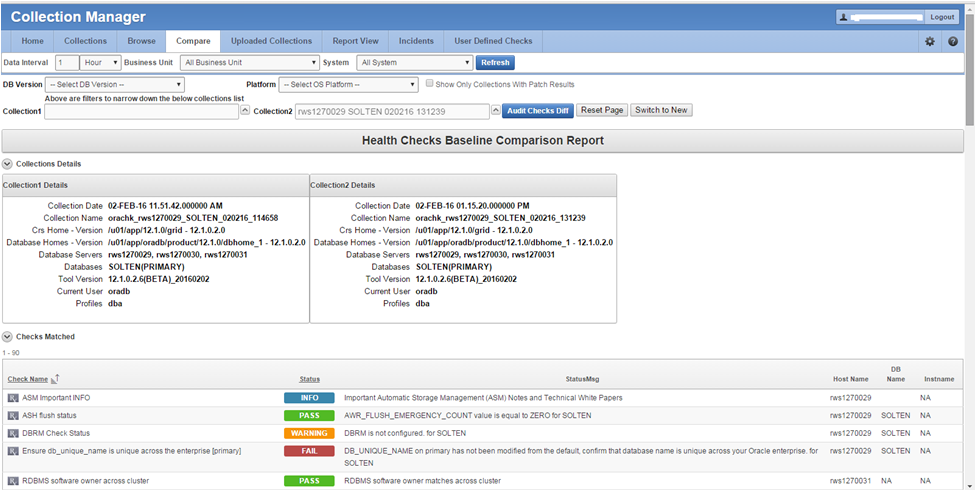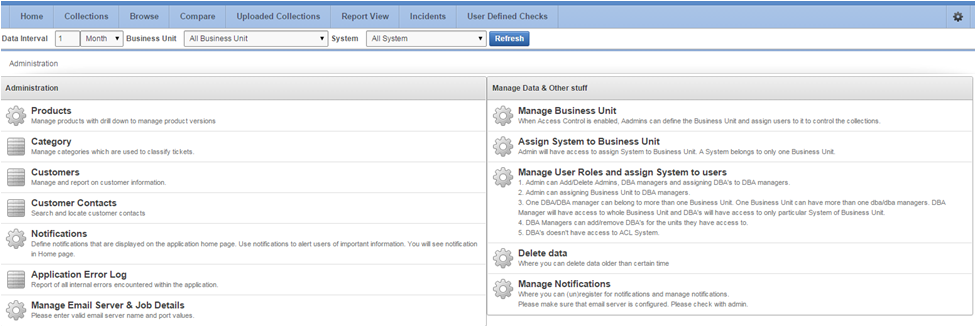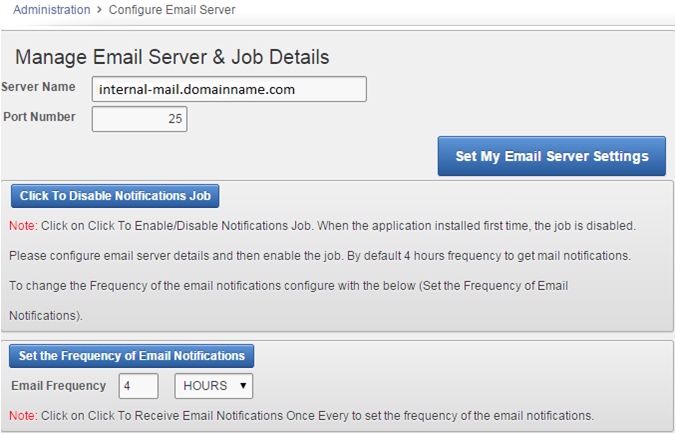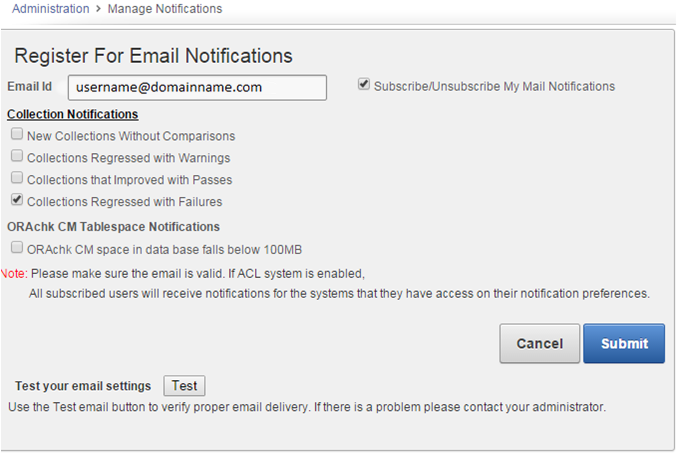2.3 Configuring Oracle ORAchk and Oracle EXAchk
To configure Oracle ORAchk and Oracle EXAchk, use the procedures explained in this section.
- Deciding Which User Should Run Oracle ORAchk and Oracle EXAchk
Run compliance checks asroot. Also, run compliance checks as the Oracle Database home owner or the Oracle Grid Infrastructure home owner. - Handling of Root Passwords
Handling ofrootpasswords depends on whether you have installed the Expect utility. - Configuring Email Notification System
Oracle Health Check Collections Manager provides an email notification system that users can subscribe to.
Parent topic: Analyzing Risks and Complying with Best Practices
2.3.1 Deciding Which User Should Run Oracle ORAchk and Oracle EXAchk
Run compliance checks as root. Also, run compliance checks
as the Oracle Database home owner or the Oracle Grid Infrastructure home owner.
Most compliance checks do not require root access. However, you need
root privileges to run a subset of compliance checks.
To run root privilege checks, Oracle ORAchk uses the script root_orachk.sh and Oracle EXAchk uses the script root_exachk.sh.
By default, the root_orachk.sh and root_exachk.sh scripts are created in the $HOME directory used by Oracle ORAchk and Oracle EXAchk. Change the directory by setting the environment variable RAT_ROOT_SH_DIR.
export RAT_ROOT_SH_DIR=/mylocation/etc/sudoers as
follows:oracle ALL=(root) NOPASSWD:/mylocation/root_orachk.shFor security reasons, create the root scripts outside of the standard temporary directory in a custom directory.
To decide which user to run Oracle ORAchk and Oracle EXAchk:
Parent topic: Configuring Oracle ORAchk and Oracle EXAchk
2.3.2 Handling of Root Passwords
Handling of root passwords depends on whether you have installed the Expect utility.
Expect automates interactive applications such as Telnet, FTP, passwd, fsck, rlogin, tip, and so on.
To handle root passwords:
Related Topics
Parent topic: Configuring Oracle ORAchk and Oracle EXAchk
2.3.3 Configuring Email Notification System
Oracle Health Check Collections Manager provides an email notification system that users can subscribe to.
-
Configuring the email server, port, and the frequency of email notifications.
-
Registering the email address
Note:
Only the users who are assigned Admin role can manage Email Notification Server and Job details.
To configure the email notification system:
Note:
Manage Notifications section under the Administration menu is available for all users irrespective of the role.
If the ACL system is enabled, then the registered users receive notifications for the systems that they have access to. If the ACL system is not configured, then all the registered users receive all notifications.
Depending on the selections, you made under Collection Notifications section, you receive an email with Subject: Collection Manager Notifications containing application URL with results.
Figure 2-5 Oracle Health Check Collections Manager - Sample Email Notification

Description of "Figure 2-5 Oracle Health Check Collections Manager - Sample Email Notification"
Under Comments column, click the Click here links for details. Click the respective URLs, authenticate, and then view respective comparison report.
Figure 2-6 Oracle Health Check Collections Manager - Sample Diff Report

Description of "Figure 2-6 Oracle Health Check Collections Manager - Sample Diff Report"
Parent topic: Configuring Oracle ORAchk and Oracle EXAchk



